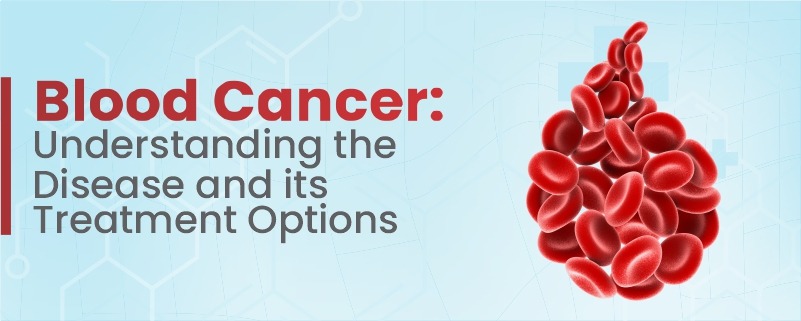
Introduction:
Blood cancer, also known as hematologic cancer, refers to a group of malignancies that affect the production and function of blood cells. It originates in the bone marrow, where these cells are formed. Blood cancer occurs when abnormal cells disrupt the normal process of blood cell development, leading to an uncontrolled growth of cancerous cells. In this blog post, we will delve into the types of blood cancer, identify common symptoms, and discuss the treatment options available to patients.
Types of Blood Cancer:
There are three major types of blood cancer: leukemia, lymphoma, and multiple myeloma.
- Leukemia: Leukemia affects the bone marrow and causes the rapid production of abnormal white blood cells. These abnormal cells overcrowd the bone marrow, impeding the production of healthy blood cells. Leukemia can be further classified into four main types: acute lymphoblastic leukemia (ALL), acute myeloid leukemia (AML), chronic lymphocytic leukemia (CLL), and chronic myeloid leukemia (CML).
- Lymphoma: Lymphoma originates in the lymphatic system, which is responsible for fighting infections. It occurs when abnormal lymphocytes (a type of white blood cell) multiply uncontrollably. The two main types of lymphoma are Hodgkin lymphoma (HL) and non-Hodgkin lymphoma (NHL).
- Multiple Myeloma: Multiple myeloma affects plasma cells, which are a type of white blood cell responsible for producing antibodies. In this condition, abnormal plasma cells accumulate in the bone marrow, leading to weakened bones, anemia, and kidney problems.
Symptoms of Blood Cancer:
The symptoms of blood cancer may vary depending on the type and stage of the disease. However, there are some common signs to watch out for:
- Fatigue and Weakness: Persistent fatigue and weakness can be early indicators of blood cancer. The abnormal cells interfere with the production of healthy blood cells, resulting in anemia and a lack of oxygen in the body.
- Unexplained Weight Loss: Rapid and unintentional weight loss can occur in individuals with blood cancer. This can be attributed to a loss of appetite, increased energy expenditure by cancer cells, and changes in metabolism.
- Frequent Infections: Blood cancer weakens the immune system, making individuals more susceptible to infections. Recurrent or severe infections, such as pneumonia or urinary tract infections, may be warning signs.
- Swollen Lymph Nodes: Enlarged lymph nodes, especially in the neck, armpits, or groin, may indicate the presence of lymphoma. These swollen nodes are usually painless.
- Easy Bruising and Bleeding: Blood cancer affects the normal clotting process, leading to easy bruising, prolonged bleeding from minor cuts, and frequent nosebleeds.
- Bone Pain: Multiple myeloma often causes bone pain, especially in the back, hips, and skull. This pain may worsen at night or with movement.
Treatment Options:
The treatment for blood cancer depends on several factors, including the type and stage of the disease, the patient’s overall health, and individual preferences. Common treatment options include:
- Chemotherapy: Chemotherapy involves using drugs to kill cancer cells or prevent their growth. It can be administered orally or intravenously. Chemotherapy is often the primary treatment for leukemia and lymphoma, and it may be used in combination with other therapies for multiple myeloma.
- Radiation Therapy: Radiation therapy uses high-energy radiation to target and destroy cancer cells. It is commonly employed in localized lymphomas or to alleviate bone pain in multiple myeloma.
- Stem Cell Transplantation: Stem cell transplantation, also known as a bone marrow transplant, involves replacing diseased bone marrow with healthy stem cells. This procedure allows for the regeneration of normal blood cells. It is often used in cases of high-risk leukemia or relapsed lymphoma.
- Immunotherapy: Immunotherapy aims to enhance the body’s immune response against cancer cells. It can be achieved through various approaches, including monoclonal antibodies, immune checkpoint inhibitors, and CAR-T cell therapy. Immunotherapy has shown promising results in certain types of lymphomas and leukemia.
- Targeted Therapy: Targeted therapy involves using drugs that specifically target cancer cells, while sparing healthy cells. These drugs work by interfering with specific molecules or pathways that contribute to cancer growth. Targeted therapies have been successful in treating certain types of leukemia and lymphoma.
- Supportive Care: Blood cancer treatment can cause side effects, such as fatigue, nausea, and weakened immunity. Supportive care measures, including medications, blood transfusions, and lifestyle modifications, help manage these side effects and improve the overall well-being of patients.
Conclusion:
Blood cancer is a complex and diverse group of diseases that require a comprehensive understanding for effective diagnosis and treatment.Advancements in medical research and technology have led to improved treatment options and increased survival rates for patients with blood cancer. Early detection, prompt medical intervention, and a multidisciplinary approach involving oncologists, hematologists, and supportive care specialists are crucial in managing this condition. By raising awareness about the symptoms and treatment options of blood cancer, we can encourage individuals to seek medical attention if they experience concerning signs or have a family history of the disease. Continued research and support for patients and their families are essential in the ongoing fight against blood cancer.




